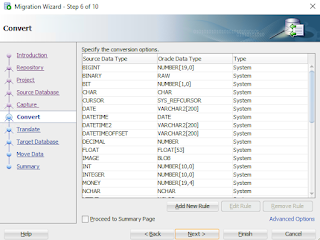This blog is one example on how to connect OAC to an Oracle Cloud database with a private endpoint using OAC's private access channel. The basic steps are:
- Use Oracle Cloud Infrastructure Console to configure a private access channel within your OAC instance.
- From your OAC instance create a data connection to the private database.
Refer to the documentation for all of the detail regarding setting this up, in particular the prerequisites.
I used the following OCI Services:
- Oracle Analytics Cloud (OAC) with the Enterprise Analytics feature.
- Exadata Cloud Service (ExaCS) with an 19c pluggable database.
Step 1 -- Creating private access channel
Using the OCI Console access your OAC instance, navigate to the Resources section, click Private Access Channel, and then click Configure Private Access Channel.
The private access channel above and the ExaCS were in the same private subnet which makes it easier. Private access channel requires four IP addresses, two IP addresses are required for network traffic egress, one IP address for the private access channel, and one reserved for future use.
After about 30 minutes you can click on the created private access channel and note the ip addresses it is using within the subnet.
Step 2 -- Creating private access channel
OAC can't access private data sources on an Oracle Database that uses a Single Client Access Name (SCAN). If you want to connect Oracle Analytics Cloud to an Oracle Database that uses a SCAN, use one of the following methods to set up the connection in Oracle Analytics Cloud: connect directly to the Oracle Database nodes, instead of SCAN or configure an Oracle Connection Manager in front of SCAN.
From your OAC Home Page, click Create, and then click Connection, and Oracle Database.
When using ExaCS the default connection strings all use SCAN. Below are three examples connecting to a PDB on ExaCS that uses the compute node names instead.
 |
| Basic connection to a single compute node |
 |
Advanced with long connection string (DESCRIPTION=(ENABLE=BROKEN)
(ADDRESS_LIST= (LOAD_BALANCE=on)(FAILOVER=ON)
(ADDRESS=(PROTOCOL=tcp)(HOST=exacsphx1-8abcd1.sub1111112222.exacsvcnphx1.oraclevcn.com)(PORT=1521))
(ADDRESS=(PROTOCOL=tcp)(HOST=exacsphx1-8abcd2.sub111111222.exacsvcnphx1.oraclevcn.com)(PORT=1521)))
(CONNECT_DATA=(SERVICE_NAME=GFSwing_SCALE100.paas.oracle.com)))
|

Advanced with easy connection string
exacsphx1-8abcd2.sub111111222.exacsvcnphx1.oraclevcn.com:1521/GFSwing_SCALE100.paas.oracle.com






























